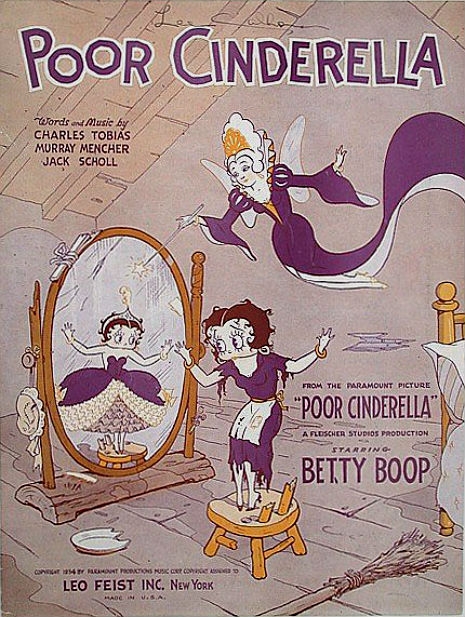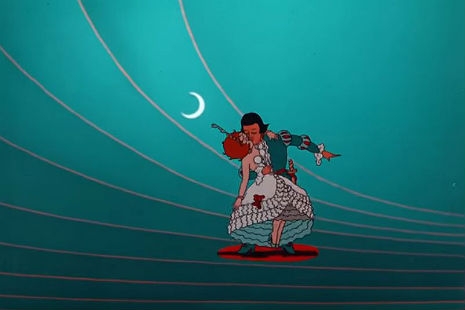
Of all the 110 Betty Boop shorts made by the Fleischer Studios between 1932 and 1939 (she was also seen in many of the Fleischer brothers’ earlier “Talkartoons”) only one of them—Poor Cinderella—was made in color. Although in the 1980s several Betty Boop cartoons were colorized—quite sloppily I might add—of her “classic era” it was just Poor Cinderella that was actually planned from the start to be a color film.
And. It. Is. Just. Amazing. Jaw-droppingly so. If it came out in 2016 let alone 1934, Poor Cinderella would be considered an absolute masterpiece. That animation was then still a pretty young field—Max and Dave Fleischer were leaders in animation production, giving Walt Disney his first real competition—the insane amount of technical prowess that went into making Poor Cinderella (produced by Max, directed by Dave) reveals it to be all the more impressive.
A celebrity cameo from famous crooner and radio personality Rudy Vallée, the Justin Bieber of the time.
First off, the film was made with the two-strip Cinecolor process. Walt Disney had locked up the rights to use Technicolor’s new 3-strip process from 1932 to 1935, but this limitation just makes the art direction look even better. It’s not so much a full color production, as one rendered in shades of black, white, blue and red. Again, it looks all the better for this, as you will see. Poor Cinderella has been in the public domain for many years, but always in scratchy, crappy-looking, less impressive versions. A recent HD transfer—part of the Betty Boop: Essential Collection 4 Blu-ray—gives us a clear glimpse of what a perfectly cut diamond this artistically and historically important short animation truly is. It’s like watching a moving stained glass window.
Second, Max Fleischer was the inventor of the Rotoscope—he patented the process in 1915—which aided in animating movement by tracing frames of live action film. One of the really impressive elements of Poor Cinderella—besides every single thing about it—is the way they did the backgrounds. Yes, with all the other near-psychedelic eye candy going on here, pay careful attention to the backgrounds. What they did was use their own proprietary in house “Stereoptical” camera—called the “Setback”—which was developed that year. Three-dimensional miniature sets were built to the scale of the animation artwork. Then the animation cels were placed within the setup so that the action could go around and among the sets. An ingenious tabletop animation process, in other words, at least partially.
For those of you reading this who are proficient in AfterEffects or 3D animation, imagine having to work like this! Clearly the Fleischer brothers were complete maniacs.
Trust me, you don’t have anything better to do for the next ten minutes than to watch Poor Cinderella. I’m quite sure of it:
Much more after the jump…








